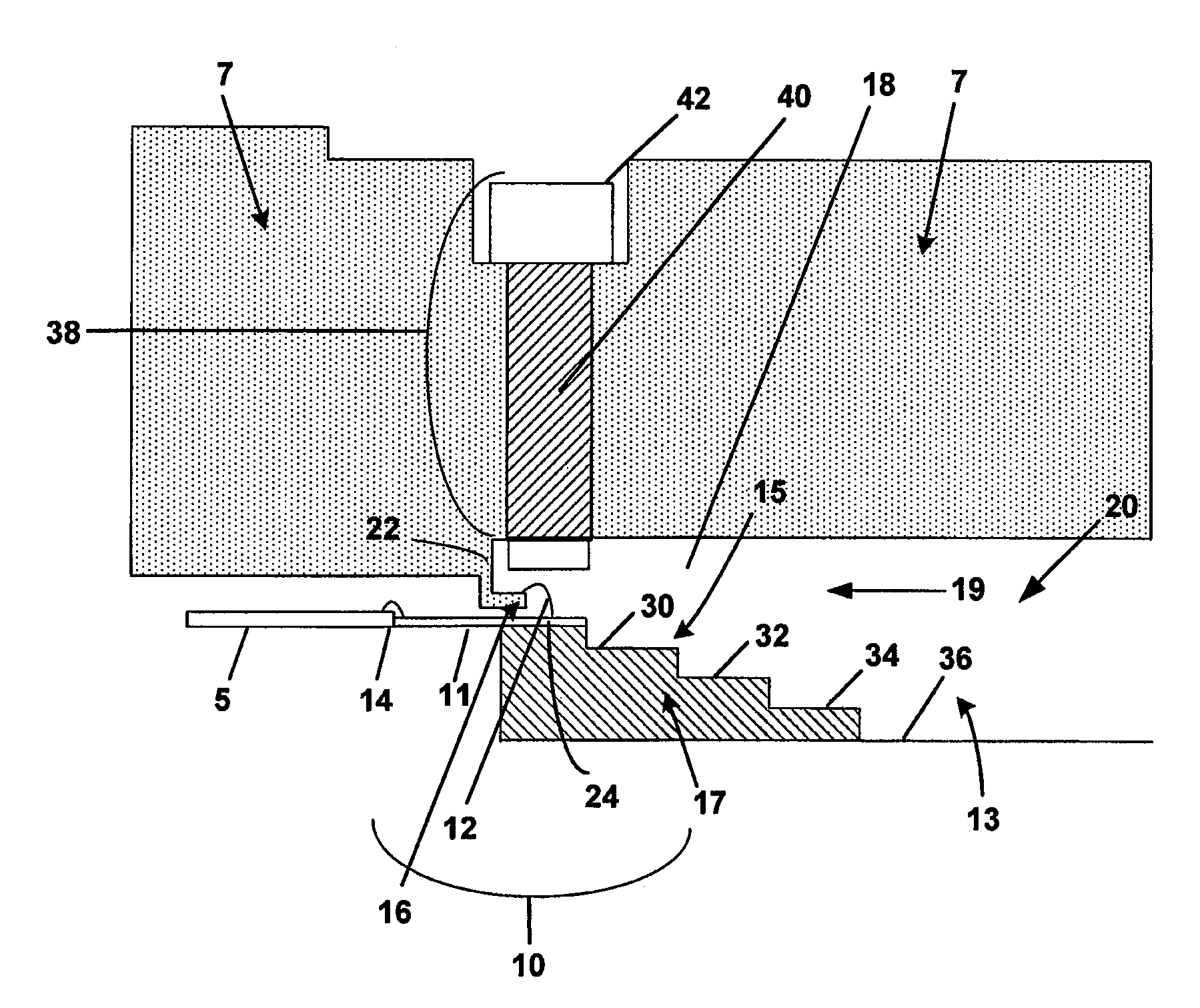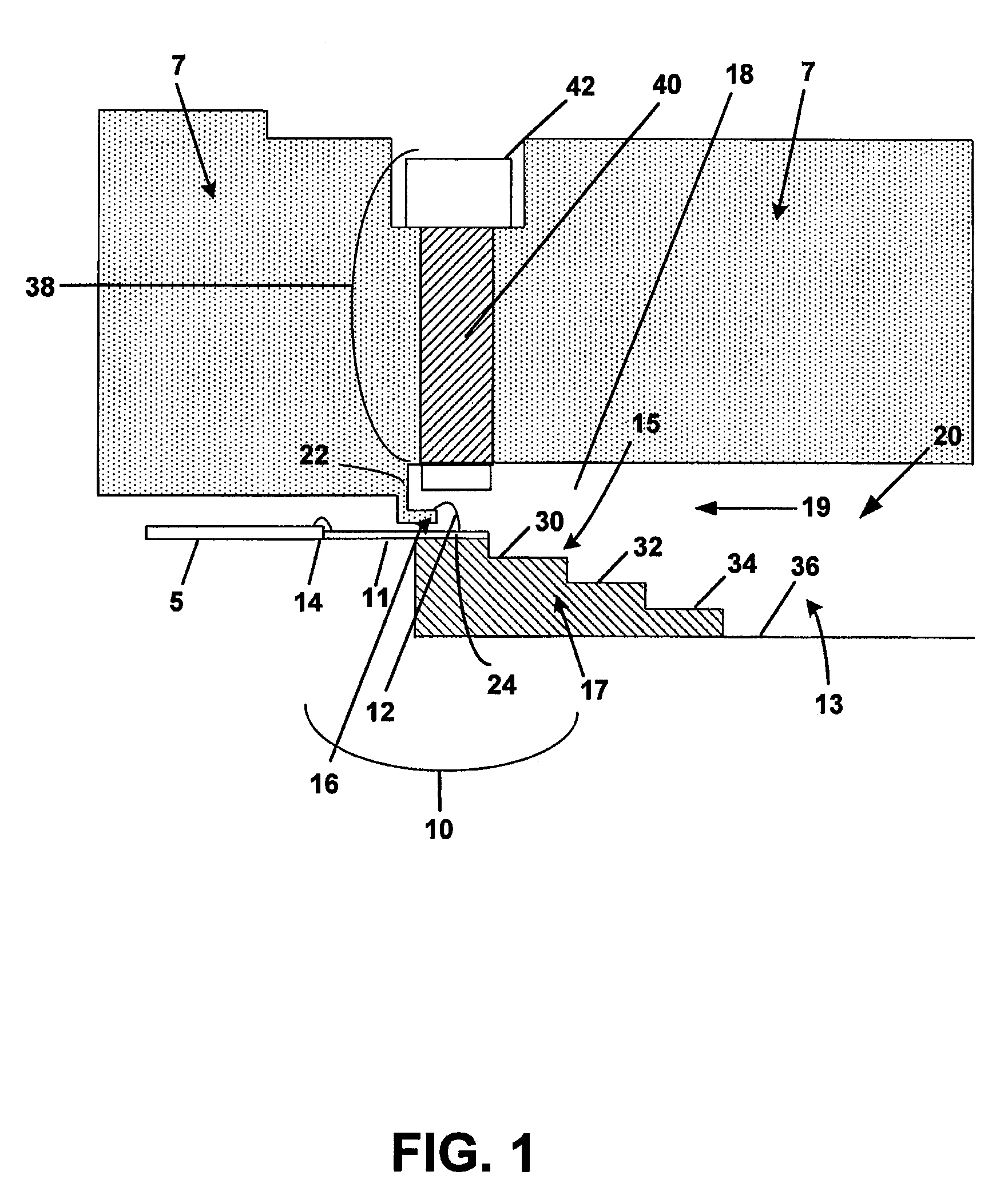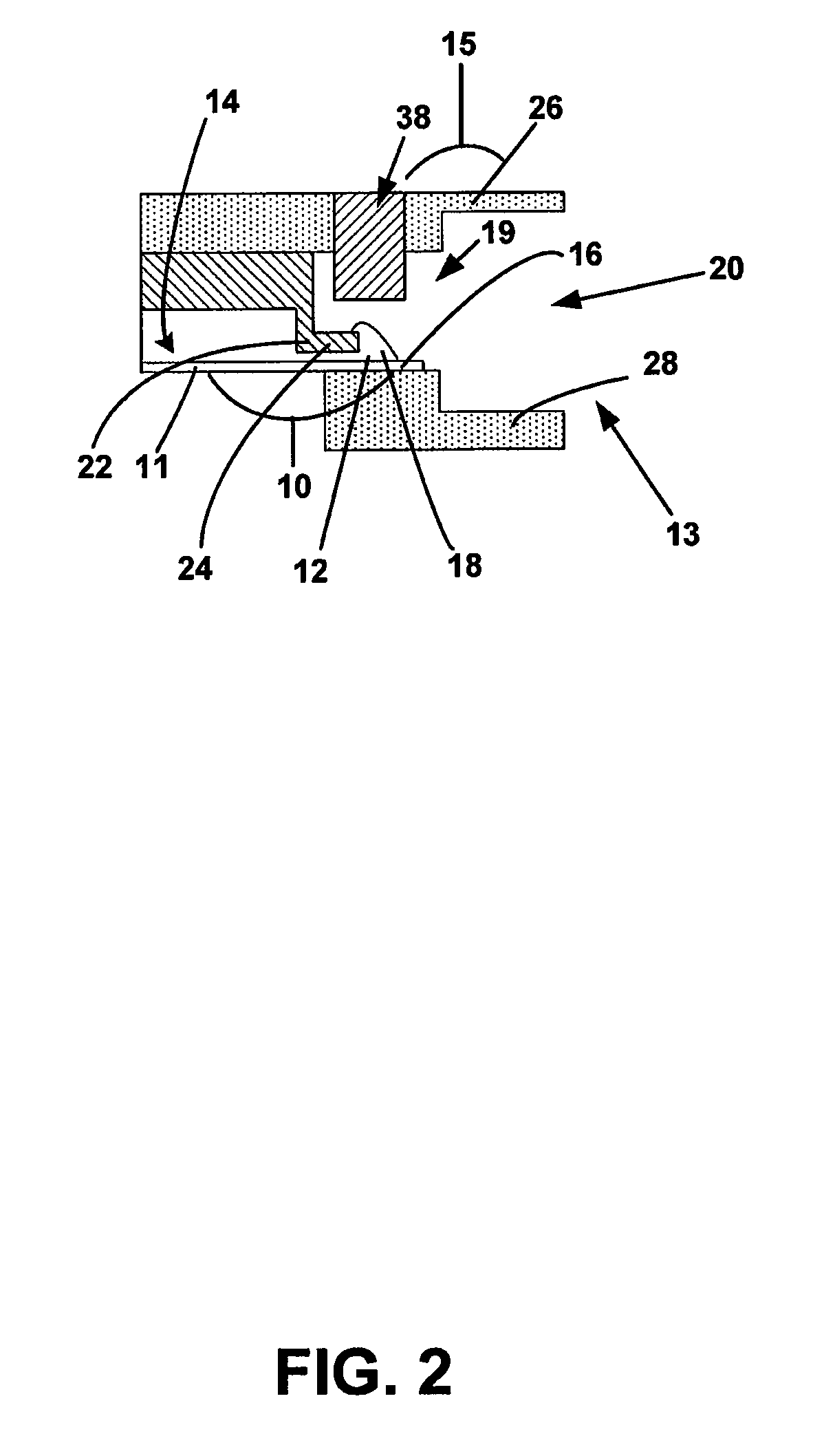Adjustable low-loss interface
a low-loss, adjustable technology, applied in the field of interfaces, can solve the problems of affecting the quality of the interface, the loss of a large portion of the signal as it travels through the circuit, and the loss of metals,
- Summary
- Abstract
- Description
- Claims
- Application Information
AI Technical Summary
Benefits of technology
Problems solved by technology
Method used
Image
Examples
Embodiment Construction
[0020]In accordance with one aspect of the present invention, an interface for connecting an integrated circuit to an energy transmission device such as a waveguide is disclosed. Throughout, the interface will be referred to as interface 10.
[0021]With reference to FIGS. 1-7, and in accordance with an exemplary embodiment of the present invention, an interface 10 is provided between an integrated circuit 11 and an energy transmission device 13. Certain exemplary interfaces 10 that may be used with the present invention are disclosed in co-pending and commonly owned U.S. patent application Ser. No. 11 / 853,287 entitled “Low-Loss Interface” which is incorporated in its entirety by reference.
[0022]Interface 10 connects integrated circuit 11, such as a MMIC, to another energy transmission device 13 such as a waveguide. While the terms integrated circuit 11 and energy transmission device 13 are used herein, it should be understood that interface 10 can connect any energy transmission, rece...
PUM
 Login to View More
Login to View More Abstract
Description
Claims
Application Information
 Login to View More
Login to View More - R&D
- Intellectual Property
- Life Sciences
- Materials
- Tech Scout
- Unparalleled Data Quality
- Higher Quality Content
- 60% Fewer Hallucinations
Browse by: Latest US Patents, China's latest patents, Technical Efficacy Thesaurus, Application Domain, Technology Topic, Popular Technical Reports.
© 2025 PatSnap. All rights reserved.Legal|Privacy policy|Modern Slavery Act Transparency Statement|Sitemap|About US| Contact US: help@patsnap.com



